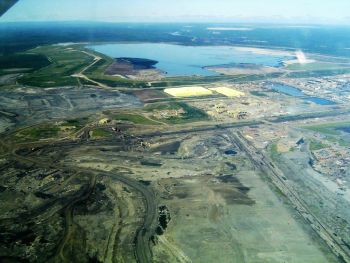Tailings Dams: Difference between revisions
No edit summary |
No edit summary |
||
| Line 18: | Line 18: | ||
</br> | </br> | ||
==Best Practices Resources== | ==Best Practices Resources== | ||
{{Document Icon}} [[Tailings Management: Good Practice Guide]] | {{Document Icon}} [[Tailings Management: Good Practice Guide|Tailings Management: Good Practice Guide (International Council on Mining and Metals, 2021)]] | ||
{{Document Icon}} [[Global Industry Standard on Tailings Management]] | {{Document Icon}} [[Global Industry Standard on Tailings Management|Global Industry Standard on Tailings Management (International Council on Mining and Metals, 2020)]] | ||
==Trainings== | ==Trainings== | ||
{{Video Icon}} | {{Video Icon}} [[On-Demand Webinar: Intro to Tailings Dam and Coal Ash Impoundment Design, Construction and Monitoring: What Can Go Wrong and Right?]] | ||
Citations: | Citations: | ||
Revision as of 00:57, 16 September 2022

|
| Syncrude Tailings Dam; Fort McMurray, Alberta, Canada. (Wikipedia) |
An industrial waste dam in which the waste materials come from mining operations or mineral processing.
“A tailings dam is a facility that is designed and managed to contain the tailings produced by a mine. A tailings facility includes the collective engineered structures, components, and equipment involved in the management of tailings solids, other mine waste managed with tailings (e.g. waste rock, water treatment residues), and any water managed in the facility, including pore fluid, any ponds, and surface water inflows and discharges”.[1]
Best Practices Resources
![]() Tailings Management: Good Practice Guide (International Council on Mining and Metals, 2021)
Tailings Management: Good Practice Guide (International Council on Mining and Metals, 2021)
![]() Global Industry Standard on Tailings Management (International Council on Mining and Metals, 2020)
Global Industry Standard on Tailings Management (International Council on Mining and Metals, 2020)
Trainings
Citations:
Revision ID: 3286
Revision Date: 09/16/2022
